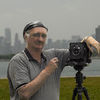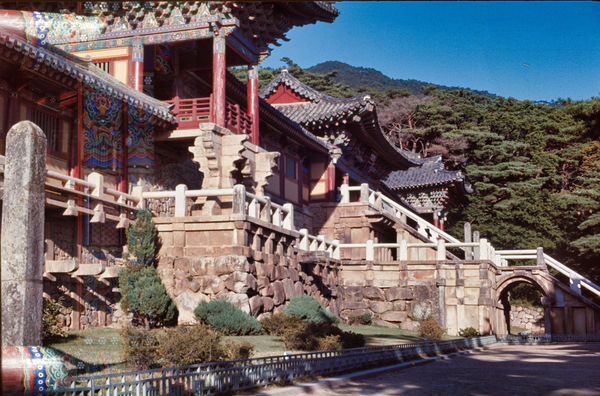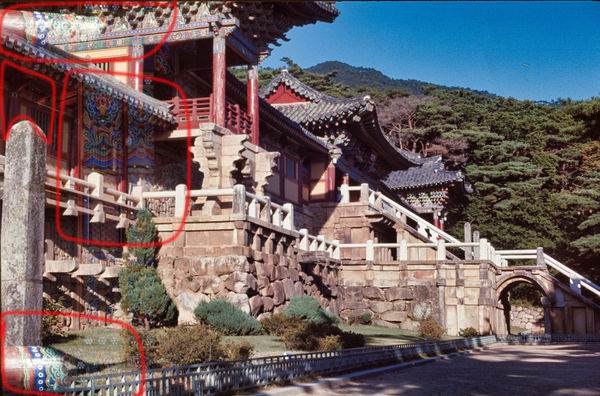What are these lines from?
Nov 14, 2017 09:34:20 #
brooklyn-camera I wrote:
Not getting picky but it appears as if most of the replies are about shooting through the glass. I was shooting from the players bench and as you know there is no glass at the players bench. so for all with answers about shooting through glass, save your time and effort. Lets see if anyone has a good guess as to what happened. It was only for a few pics and have no reason why? Guess the UHH has no idea either. Thanks for your effort.
The presence and absence of glass explains everything.
Unless that was the only hockey game where you ever took photographs or if you always sat in the player's box at every game, I'm not convinced that your memory about the glass in this case is accurate.
It's really up to you to repeat the test and see if you can get the same results. We can't do that for you.
The fact that you did not notice the problem before you discarded your raw file three years ago does not help.
Nov 14, 2017 09:40:55 #
brooklyn-camera I wrote:
I'll give it a try. Question...why did this occur to only a few photos and not all of them? Out of 1100 photos maybe 20 photos and only at the start of the game. Maybe the camera needs to get acclimated to the cold temp,
could that be a possibility?
could that be a possibility?
Yes, a cooling piece of glass is a possibility and that might be the clear filter. The pattern on the second image is regular which points to a flat piece of glass.
Was the only game where you noticed the problem?
Nov 14, 2017 09:42:25 #
brooklyn-camera I wrote:
Not shooting through the glass.....shooting from the players bench. Nothing between the action and myself except air. I guess I'll have to check with Canon and see if they can come up with an answer.
So you and the players sit on an unprotected bench during the game? If that is correct, I certainly would not be sitting there and take a chance on getting hit by a puck. Or my lens getting hit.
Nov 14, 2017 09:43:24 #
brooklyn-camera I wrote:
Had a clear UV filter for protection.
LOL
Nov 14, 2017 10:01:41 #
This is a guess, but based on some materials knowledge. The glass filter was exposed to thermal stress during its manufacture (as all glass is) and these lines of stress may induce very slight differences in condensation on the surface following the lines of stress. The air between the back of the filter and the front lens element is somewhat insulated from the external ambient and will take longer to come to thermal equilibrium with the environment than will the external surfaces. Thus there will be thermal stress again on the filter. This combined with residual moisture in the air between filter and lens could result in almost invisible condensation that is only noticed when at high ISO.
As others have suggested, try shooting without the filter. Another thing to try is to expose both the camera and all lenses to the rink environment well before starting to shoot.
As others have suggested, try shooting without the filter. Another thing to try is to expose both the camera and all lenses to the rink environment well before starting to shoot.
Nov 14, 2017 10:05:24 #
Are you sure you didn't accidentally apply a filter from a program like Photoshop? The second one looks similar to Photoshop's half-tone distort filter.
Nov 14, 2017 10:12:57 #
Retina
Loc: Near Charleston,SC
It is hard to imagine an optical source of the grid given the confidence of the OP's lack of a barrier at the rink. I would blame cold electronics. If the grid was indeed caused by electronics in the camera, then images #1 and #2 have a significant difference in cropping levels in post. #1 appears to be very heavily cropped compared with #2 given the different dimension of the grid blocks. Since the banding moiré-like patterns appear so similar in patten and in their positioning in #1and #2, this pattern would have be be repeated concentrically. Whatever cropping was done was centered on images' centers.
#2 seems to have strong contrast enhancement bringing out the grid and based on the distinction of the noise. By the way, the focus and sharpness in #2 is very impressive. In #2 the grid seems to have only dark lines while in #1 they are all or mainly lighter than the image. This could possibly be due to strong brightness and contrast manipulation based on my experience abusing images in PP.
The image in #2 was tilted a fraction of a degree counter-clockwise at some point PP, so I lean toward the grid coming from the camera, though optically like the bands.
If this is a setup, then I want to meet the brooklyn on the ice.
#2 seems to have strong contrast enhancement bringing out the grid and based on the distinction of the noise. By the way, the focus and sharpness in #2 is very impressive. In #2 the grid seems to have only dark lines while in #1 they are all or mainly lighter than the image. This could possibly be due to strong brightness and contrast manipulation based on my experience abusing images in PP.
The image in #2 was tilted a fraction of a degree counter-clockwise at some point PP, so I lean toward the grid coming from the camera, though optically like the bands.
If this is a setup, then I want to meet the brooklyn on the ice.
Nov 14, 2017 10:15:38 #
ELNikkor wrote:
Could it be overhead lights at different angles flickering out of synch?
What kind of lights are on the rink? I'd check their specs for frequency of output.
Nov 14, 2017 10:32:42 #
PPP
Loc: Florence
First file is named " 655776-lr_adjusted_4890.jpg"! Was this moire effect evident before it was adjusted in LightRoom? Was it in the RAW file originally? Do you batch process all files on import? Could be a software/hardware anomaly as well. Has it happened before or after this shoot?
Nov 14, 2017 10:46:44 #
were the lights at the rink just recently turned on? lights do strange things before they warm up
Nov 14, 2017 10:47:05 #
Nov 14, 2017 10:47:31 #
Nov 14, 2017 10:48:51 #
IMHO, Szalajj is totally correct when he says to get rid of the UV filter and here's why.
This is likely an image coming from outside the FOV of the lens. I found this a fairly common effect when regularly using a UV filter in the old film days. With anti-reflective coatings being more common today, it's less of a problem but still there.
What happens is a strong image enters the UV filter at an oblique angle just outside the FOV of the lens. Light rays that strike the filter at nearly 90 degrees from the lens axis simply reflect off the filter surface (total internal reflection) and are not a problem. The light is bent by the filter and reflect (multiple times) between the two pieces of glass, separated by air, and some of those reflections end up in the FOV of the lens. The basic principle of internal reflection is what makes fiber optics work.
I have attached an example image. In the past, I've experienced this effect too often when using UV filters, but this image was a catastrophic failure for me. It was also the last time I used a UV filter while taking a picture. It was also the last time (1975) that I experienced this problem.
I ditched the UV filter for lens protection because, for me, the whole reason for carrying a camera around was to capture an image in time that represented an irreplacable memory or experience of mine. For me, that was and still is more important for me that the risk of damaging my lens.
The following image is an example of reflections entering the image outside the FOV of the lens, which, I believe, is similar to what the OP experienced. The reflected images that ended up in the picture were actually just outside the FOV of my camera.
Again, just another thought to consider. Hope this helps
Mike
This is likely an image coming from outside the FOV of the lens. I found this a fairly common effect when regularly using a UV filter in the old film days. With anti-reflective coatings being more common today, it's less of a problem but still there.
What happens is a strong image enters the UV filter at an oblique angle just outside the FOV of the lens. Light rays that strike the filter at nearly 90 degrees from the lens axis simply reflect off the filter surface (total internal reflection) and are not a problem. The light is bent by the filter and reflect (multiple times) between the two pieces of glass, separated by air, and some of those reflections end up in the FOV of the lens. The basic principle of internal reflection is what makes fiber optics work.
I have attached an example image. In the past, I've experienced this effect too often when using UV filters, but this image was a catastrophic failure for me. It was also the last time I used a UV filter while taking a picture. It was also the last time (1975) that I experienced this problem.
I ditched the UV filter for lens protection because, for me, the whole reason for carrying a camera around was to capture an image in time that represented an irreplacable memory or experience of mine. For me, that was and still is more important for me that the risk of damaging my lens.
The following image is an example of reflections entering the image outside the FOV of the lens, which, I believe, is similar to what the OP experienced. The reflected images that ended up in the picture were actually just outside the FOV of my camera.
Again, just another thought to consider. Hope this helps
Mike
brooklyn-camera I wrote:
Shooting with the same camera 7D MKII and a Canon ... (show quote)
Nov 14, 2017 10:50:31 #
brooklyn-camera I wrote:
2014 is connected to my Brooklyn-Camera 2014 Photos were from this past weekend 11-11-17.
I missed that those images were taken 11/11/17. It's in the EXIF as well. Please pardon my assumption that you might have forgotten the circumstances.
And they are only slightly cropped from 20MP so cropping explains nothing.
Regarding the cooling of glass - it applies, of course, to the entire lens as well as to anything else between the sensor and the subject including an AA filter.
Optical glass is deliberately cooled slowly to give time for the stresses from cooling to dissipate. The opposite is true for a Prince Rupert's Drop in which the cooling is deliberately rapid in order to induce stress.
Glass is neither a liquid nor a solid. It can have some peculiar characteristics.
The bottom line is that we need to give our camera and lenses time to reach ambient temperature to eliminate any weird optical effects.
Nov 14, 2017 10:57:36 #
LoneRangeFinder wrote:
This is nothing like the pincushion effect which is the pinching of the image in the center. It’s a lens distortion— but it looks nothing like this.
The point is that, whatever the cause of the gridlines may be, there is a distinct pincishioning effect on the gridlines.
Just an observation without, as yet , a reasonable explanation.
Pincushioning is often assumed to be strictly an optical deformation phenomenon. However, that it can be digitally minimized ...or increased, indicates that it is not exclusively an optical phenomenon.
If you want to reply, then register here. Registration is free and your account is created instantly, so you can post right away.






